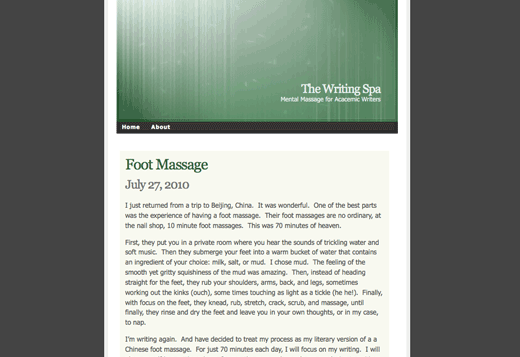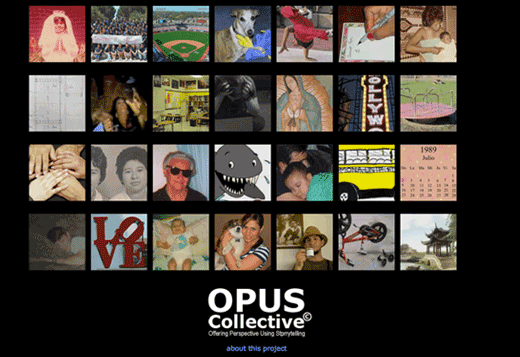Teshia Young Roby, PhD
Scholarly Interests
The goals of my scholarship and creative agenda are similar to those of my teaching agenda: To examine the implications of educational and constructivistic uses of emerging technologies for the purpose of bringing about better student connections with course content, greater connectedness within a learning-community, better promotion of identity within an academic setting and more cross-cultural understanding in a globalized society. My overarching scholarly agenda is one of exploring opportunities for cultural identity inclusion in the classroom, particularly on the post-secondary level, and of investigating and examining technologies and digital media that promote communication, collaboration, and cohesiveness. I embrace the term social scholarship to describe the work I do, not only with digial storytelling, but also with the teacher-scholar work I do using forums that are not tradiationally academic.
Digital Storytelling
I am interested in the classroom implications of digital storytelling, from both the teacher and student perspectives. Storytelling allows people to share personal and cultural accounts and perspectives in ways that are unique and individual, yet have the potentiality of being transsituational and transcultural. The technique of digital storytelling requires the storyteller to do a great deal of introspection and have personal connectedness to the topic or course content. The storyteller then uses multiple technologies and personal artifacts such as old pictures, home movies, a passport, old letters, drawings, a piece of clothing, a birth certificate, etc., and accompanying music to help reveal the story. Those elements work in concert with the most important component of a digital story: the storyteller's own speaking voice which gives the story life.
An example of digital storytelling in a college setting is the story entitled Engineering 101 (Part 1 and Part 2), in which I tell the story of the 1984 Kanas City Hyatt Tragedy and enfuses human element to help students connect with fundamental concepts in the engineering disciline.
I created this as a teaching tool for my digital storytelling faculty learning community
Use of storytelling as a teacher preparation tool can be traced to the early 1900s when a teacher’s college in New York used storytelling to help the student-teachers make lasting associations between their students’ home lives and the classroom (Grinberg, 2002). Digital storytelling can enhance the classroom in similar ways. By meaningfully integrating storytelling into the curriculum and infusing the storytelling with digital media, teachers can augment their own pedagogical and professional development. However, in order for teachers to effectively include digital storytelling into their curricula, they must first discern value in using storytelling as a pedagogical tool (Rakes & Casey, 2002; Coulter et al., 2007). When teachers experience the entire content-related storytelling lifecycle and create the personal narrative themselves, they are afforded a chance to examine their beliefs and behavior and potentially induce pedagogical and social transformation (Caruthers, 2005; Connelly & Clandinin, 1994). Teachers can use the story writing process as an opportunity to dissect and examine their thoughts about what it means to be a learner and a teacher, and then use the analysis to make adjustments in the classroom. My scholarly agenda leads me to actively research the methods by which faculty and teachers can use digital storytelling to help their students connect with new material, demonstrate learner outcomes, create reusable course artifacts, and articulate personal identity.
I am also interested in ways that digital storytelling can promote awareness and advocacy for underserved issues and communities or have cultural and social value beyond the classroom walls. I teach a course called GED550 – Culture Inclusion and Curriculum Enhancement through Digital Storytelling and EWS 499 – Inclusion of Cultural Identity through Digital Storytelling (I teach these as a combined course). During the course, I took the opportunity to create my own personal digital story about my reflections on a collective memory that my family experienced together. The story is called, "Bike Riding Lessons."
I created this personal story about a family memory.
Also in the course, a student created a digital story called “Raices,” in which the storyteller reflects on his family’s agricultural roots and their ties to a community garden. Such as story could be used by a teacher to introduce, for instance, ninth grade science content standards for California Public Schools (California Department of Education, 2003, p.54), or by community organizations trying to promote healthier lifestyles.
Created by Albert M. in my Culture and Indentity through Digital Storytelling course.
To showcase the rich stories told by my students through their created digital stories, I founded the The OPUS Collective. The website is designed to serve as a repository for culture- and identity-inclusive digital stories that may provide community, perspective, and understanding for others.
Academic Writing Blog
I have a blog called The Writing Spa, a place where I provide mental massage for the academic writer (myself included). On the blog, I share inspirational anecdotes and practical writing assistance for graduate students who may need extra guidance. For instance, on the blog, I discuss an article that I wrote entitled
Dr. Roby's Completely Doable 10-Steps for Writing a Literature Review. In the article, I offer natural language tips for writing a literature review, which is usually the toughest part of the thesis writing process.

A post of my blog, The Writing Spa: Mental Massage for the Academic Writer
Virtual Learning environments
For all of my courses, including the traditional, on-campus, face-to-face courses, I include complimentary course materials through an online course management system. The materials involve various media such as videos, podcasts, documents, graphics and images, blogs and more. For the blended learning and online courses, I often incorporate more collaborative and interactive virtal environments such as wikis, Second Life and Skype.

Holding my Alternative Learning Environments graduate course in SecondLife
Also visit my social networking page see a collection of web technologies employed in my classes.
Site last updated: 10/20/15







